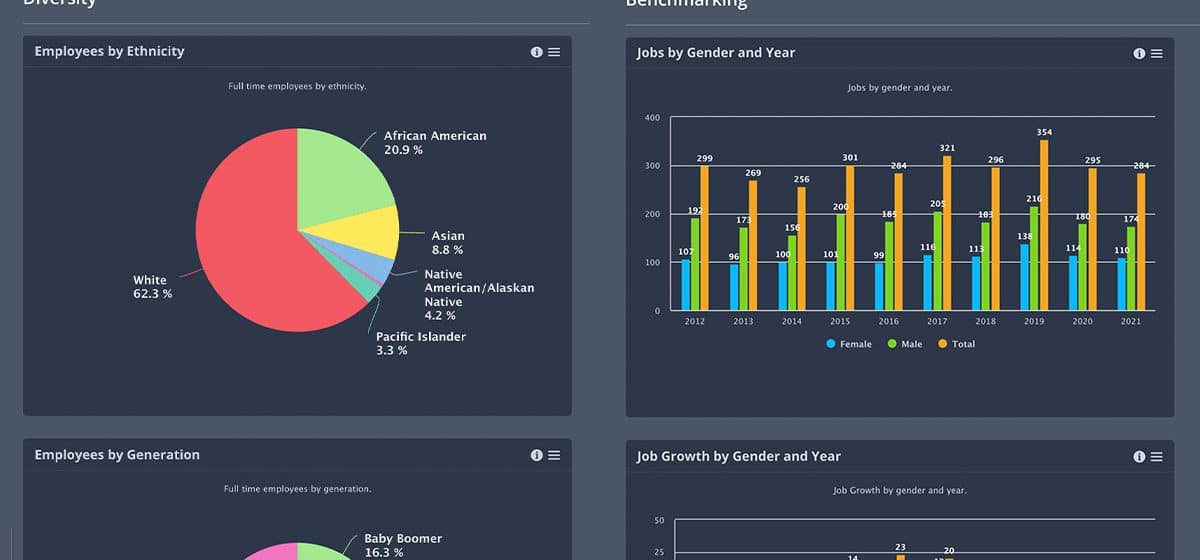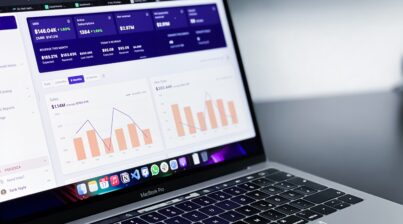Looking back over the last couple of years, it’s evident that the COVID-19 global crisis dealt a terrible blow to state economies, businesses and the workforce. In the early months of the pandemic, U.S. employers were downsizing at incredible rates – laying off millions of workers and ordering wage and hiring freezes.
Impact of the COVID-19 Global Crisis
Overnight, employees faced new labels based on their job duties: “work from home” employees, “essential” workers, “non-essential” workers, and “furloughed” or “laid-off” employees. Work environments changed from offices or workstations to the dining table or a make-shift office in the corner of the living room. And work practices shifted to virtual teamwork and meetings, social distancing, a focus on health and well-being, and living off of unemployment checks.
At the same time the pandemic was upending normal work as we knew it, a shift and gain of momentum in how work was done quickly took place. For example, where it once was thought that working from home was a privilege and rarely happened, it became mandatory for a majority of the workforce. For years, employers resisted the request for employees to work remotely or virtually due to fears of decreased productivity and communication, as well as the impact it could have on workforce culture.
Ironically, over two years later, these same employers are finding it quite difficult to fill 10 million job openings, and your organization might still be facing these challenges.
The Great Resignation
What’s even more ironic is that two and one-half years after the start of the pandemic, workers are quitting their jobs faster than ever. And they have decided to not return to the industries that they were formerly practicing in, resulting in many dubbing this historic period in time, “The Great Resignation.”
According to the U.S. Bureau of Labor Statistics, the numbers of quit levels have not slowed down:
According to Lawrence Katz, Professor of Economics at Harvard, the U.S. hasn’t seen a quit rate this high since 2000. It’s interesting because typically people are more inclined to quit their jobs when they see a lot of other job openings and opportunities. And, right now we’re seeing a record level of job openings – there’s a huge demand. So, why are employers having a tough time filling those jobs? Katz believes we’ve “met a once-in-a-generation ‘take this job and shove it’ moment.”
But what’s driving it?
Recently, the Limeade Care Report: The Great Resignation Update highlighted these statistics:
40% left their jobs simply because of burnout
37% were looking for better compensation
28% left companies without another job lined up
Is this a temporary phenomenon? Or is this a new wave of labor activism? What we do know is that most Americans’ financial situations were more positively situated prior to the COVID-19 pandemic than people crawling out of the mire of the Great Recession of 2008.
Additionally, as a result of the COVID-19 pandemic, the government provided additional unemployment payments and other stimulus funds, making it possible for workers to resist returning to the 9-5 grind.
We agree, it feels like the last few years have been riddled with doom and gloom. However, there’s a silver lining and positive side to a world-wide pandemic, for both employers and employees.
Radical Flexibility and the Great Awakening
What have we learned over the past couple of years? Basically, doing things the way we’ve always done them doesn’t get us very far anymore. HR is in an era of redefining itself and realizing that radical flexibility has become both a business mandate and an employee expectation.
From an employee’s perspective, workers are asking themselves whether their current jobs and/or employers are the right fit with their passions, skillset, education, culture, work schedule, and more. Evaluation of personal and professional lives is happening. According to Projections Inc., “Radical flexibility is a new set of principles in which employee expectations about where, when, and how they work are met through flexible work schedules, shared purpose, and excellence in communication processes. It is a work model that strengthens employee engagement by empowering people to fit work into their lives instead of the other way around.”
Employers can take this opportunity to revitalize their culture, build career growth plans, revisit benefits, and update job descriptions for new candidates. And for their current team force, create a more engaged, productive, cohesive, and loyal team. It comes down to building trust and flexibility into the Employee-Employer relationship and letting go of control by letting employees determine their work processes. Basically, employees still have their job responsibilities, assignments, and deadlines, but now it’s up to them how they get it all accomplished. And it’s up to employers to leverage data to measure employee performance.
Compensation Package Competition
Adaptable. Innovative. Flexible. These are adjectives used over the last few years to describe organizations that have survived, and even thrived, during recent global events. The ever-changing workforce environment, fluctuating economy, and often-changing regulatory requirements from COVID protocols have forced organizations to move quickly and course-correct from one day to the next.
Moving from one year to the next, your organization will need to continue to be agile in your recruiting and retention strategies. What has really come to light is the necessity for organizations to leverage their cultures as an important recruiting marketing tool, while revamping compensation and benefits offerings, especially when there is a shortage of workforce talent. Thorough compensation plans are an effective tool for attracting the most skilled workforce.
Remote Work and Flexible Schedules
Although remote work has been rare and a bit taboo in former years, what we’ve learned in recent years is that remote work has actually been an overwhelming success. In fact, recent surveys have shown that 70% of companies will be or already have implemented a permanent hybrid work schedule for positions that can offer remote options due to tasks and activities.
And if remote work isn’t a possibility for everyone, there are still ways for companies to offer flexibility that reaps the rewards of improved morale and employee performance. Some of those options include letting workers control more of their job duties, less micromanaging, more flexible work schedules, and having more input into career growth. These types of strategies promote a healthy work/life balance.
Variable Compensation
Some advantages of remote work that companies are realizing are lower cost of office space and increased employee productivity. However, labor shortages continue to be a major problem for organizations. What would you guess is the number one issue for most major corporations across all industries? Talent retention. Holding on to employees is difficult with so much competition. So, what can your organization do? Implement variable compensation strategies to reward top performers. These types of programs include bonuses, on-the-spot awards, and incentive plans tied to performance.
Mitigate Pressure on Compensation Budgets
We’re in a tight labor market and inflation is increasing. More strain is being felt on companies’ compensation budgets as wages struggle to keep up with inflation. That’s a serious cause for concern. However, there are some great starting strategies to tackle these challenges that your organization could try:
- Continuously compare market data to your compensation packages
- Make faster candidate decisions and offers
- Provide transparency about compensation structures
- Monitor and take action to avoid compensation disparity
Wrapping It Up
These are uncertain times. HR personnel must continue to adapt. And your organization must create a philosophy that keeps you nimble and implement systems and strategies that help you invest well into your teams. Whether you are hiring or working to engage and retain employees, the best HR data should be used with easy-to-use HR dashboard templates. Learn how Employee Cycle pulls all your employee data from your different HR systems into one HR analytics dashboard. Schedule your demo today.












